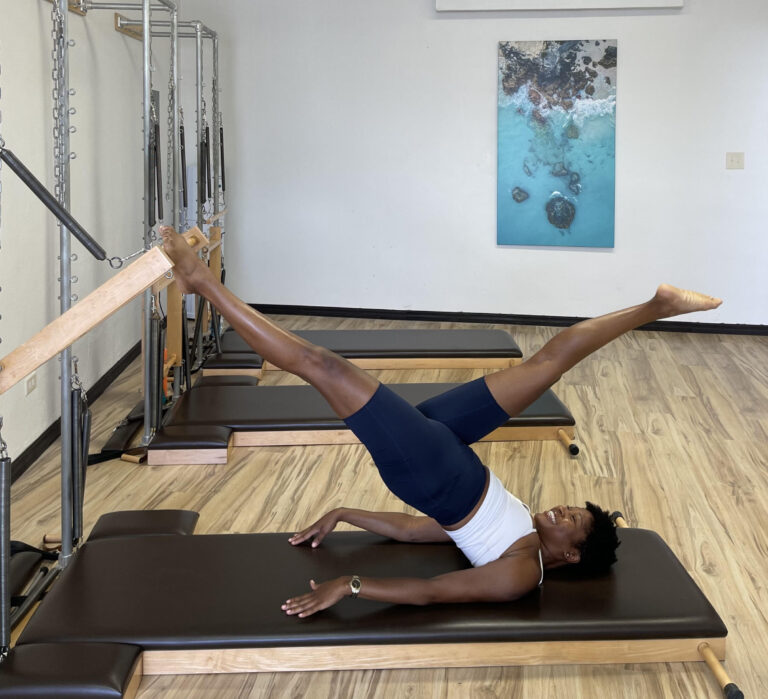by KRYSTAL MCKENZIE
Yoga and Pilates have the same health benefits but are distinctive from each other. Everyone can benefit from regular stretching and core strengthening, and devotees of both these philosophies swear by their practice.
Yoga, which started in India about 5,000 years ago, has philosophical roots in addition to the physical benefits. Pilates on the other hand, was created in the 1920s by Joseph Pilates and is known for building a stronger mobilisation, and focuses on a healthy lifestyle.
Yoga can help instil calm, increase the mindfulness factor and reduce stress. It also helps to reduce symptoms of depression and anxiety. Yoga has always been the source of a good workout and aids in stretching, building muscle and increasing flexibility.
Yoga helps align the mind, body and spirit. It also emphasises physical postures, controlled and conscious breathing. Yoga begins with centring yourself in a particular posture or ‘asana’. Yoga aims to synchronise the breathing with the movement of the body.
Pilates helps strengthen mental health, but it’s not a form of spiritual exercise. Pilates helps to gain abdominals and other muscle groups. The movements in Pilates target a specific muscle group and they are repeated while breathing is controlled, and it helps to maintain endurance during repetitions.
Pilates focuses mainly on specific movements and exerts control over breathing. The main aim is strengthening, aligning the body and flexibility. It emphasises spine and pelvic alignments, along with muscle groups like the gluteal and core.
Vehia Walker of BDA Pilates, the newest Pilates studio on island, has been teaching classical Pilates for the past 20 years. She and her business partner, Pauletta Francis, are passionate about sharing the health benefits of Pilates, including creating harmony between the mind, body, and spirit.
“Pilates is low-impact, doesn’t have a cardio aspect like running, but it is beneficial for the heart and gentle on the body while still being effective,” Ms Walker explains. “Through Pilates, you’re able to increase your flexibility, strength, body awareness. While some people just can’t do movements due to joint issues initially, it’s still beneficial and will help get you fit.”
BDA Pilates commits to the Six Principles of Pilates, which were written by Joseph Pilates’ students. They are Control, Concentration, Centring, Precision, Breath, and Flow. You can Google that for more information.
To keep up the variety so you don’t get bored, you can engage in mat, tower or duet reformer Pilates. Each of them involves the base movements and principles, but you apply them to different pieces of equipment.
On the mat, you hold movements like planks, side planks and core exercises to build your muscles and core strength. The tower is an apparatus that offers a stable surface on which individuals sit, stand or lie down and work with resistive springs that are attached to the tower to build strength, flexibility, and muscular endurance. The reformer helps to increase core strength, improve muscle endurance, get better posture and increase flexibility, and is adaptable to your needs.
“Pilates is right for you if you are a human being!” Ms Walker laughed, when asked who Pilates is good for. “You don’t have to be fit, flexible or advanced. Come as you are, and I’ll work with you. I’ll ask how your body is feeling and I work privately first with you and the body you have at the time, and we’ll work together from there.”
Ms Walker also emphasises that the benefits of Pilates aren’t restricted to the physical. The mental benefits include an improved life outlook and better self-awareness, and an overall better headspace. She shares that people who come to class over their lunch hour confess to being in a better space to continue the day and that makes her feel that what she’s sharing is worthwhile.
“It’s not just about looking good, either” she revealed. “You can have a nice-looking body, but if it’s not functional or you can’t move, you’re not living your best life.”
Is Pilates all you need to be healthy and fit then? Ms Walker encourages everyone to engage in some other physical activity – she goes to a personal trainer two times per week herself.
“Do other things in partnership with Pilates and try something new,” she encouraged. “No matter what physical activity you engage in, Pilates can help stretch it out and add benefits to your workout.
Running is a popular activity to complement Pilates. I have students who are runners, golfers, weightlifters, and who even do yoga as well. Pilates helps you be aware of your body and benefits other workouts.”
While outdoor Pilates is usually done more in the warmer months, the small class sizes and safety protocols still make for an excellent workout indoors, so try it out! For more information, check out bdapilates.com, email info@ bdapilates.com, or call on 441-705-1668.

